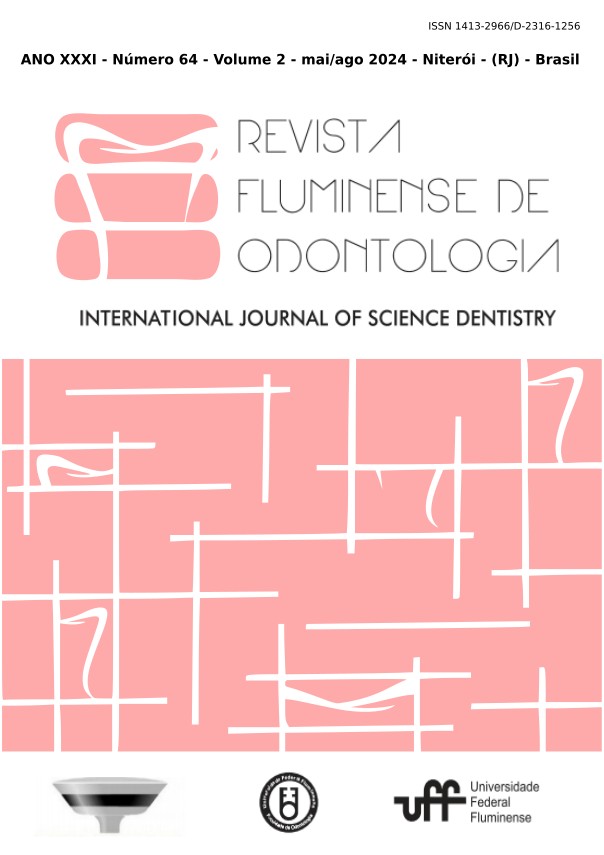IDENTIFICAÇÃO DE ENTEROCOCCUS SPP E ENTEROBACTERIACEAE EM CANAIS RADICULARES COM INFECÇÃO PRIMÁRIA E SECUNDÁRIA OU PERSISTENTE
DOI:
https://doi.org/10.22409/ijosd.v2i64.59609Abstract
Objetivo: O objetivo do presente estudo foi identificar microrganismos das espécies Enterococcus spp e Enterobacteriaceae em dentes com canais radiculares infectados portadores de infecção primária e/ou secundária/persistente. Métodos: A amostra do presente estudo foi de 23 pacientes que apresentaram necessidade de tratamento ou retratamento endodôntico. Foram coletadas amostras de 28 dentes infectados usando pontas de papel absorventes estéreis, transportadas em solução salina, diluídas, plaqueadas e incubadas em estufa de cultura bacteriológica. Para o crescimento de microrganismos foram utilizados jarros com gerador de atmosfera de anaerobiose. Colônias microbianas foram isoladas, caracterizadas e identificadas. Os dados coletados foram estatisticamente analisados com a utilização do software SPSS for Windows 10.0 (SPSS Inc., USA). Resultados: Foi isolada somente uma cepa do gênero Enterococcus spp, e nenhuma espécie do gênero Enterobacteriaceae. Das coletas microbiológicas realizadas em 28 canais radiculares, todas apresentaram crescimento microbiano em anaerobiose. Dezoito dentes apresentavam necrose pulpar e lesão periapical. Os outros 10 dentes já haviam recebido tratamento endodôntico prévio e em 6 destes houve constatação de lesão periapical, sendo que nos outros 4, não. Conclusão: Nas condições experimentais do presente estudo, pode-se concluir que não houve correlação da presença de espécies microbianas das famílias Enterococcus spp e/ou Enterobacteriaceae com infecção primária ou secundária do canal radicular.
Palavras-Chave: Enterococcus spp, Enterobacteriaceae, Canal Radicular. Endodontia.


